The vibrant colors of and sweet scent of cempasúchil flowers filled The Hollywood Forever Cemetery as thousands of people in sugar skull face paint streamed in to celebrate the 18th Annual Día de Los Muertos celebration this past Saturday.
This year the event celebrated the legacy of Jose Guadalupe Posada, a Mexican printmaker of the late 19th century known for his satirical cartoons of skeletons that often carried stinging criticisms of Mexican society and politics. His depiction of an upper class female dandy known as La Catrina became an icon of Día de Muertos, and his artistic contributions have greatly influenced the modern aesthetic of the celebration. His etchings traveled from Mexico to Los Angeles before being hung along the walls of the mausoleum. Interpretations of his art cropped up all over the festival in altars, larger-than-life calaveras, and stage decorations.
With more than 100 community altars dedicated to loved ones passed amid the smoke of burning copal, some honored those lost in recent natural disasters, while others venerated trans women of color who were victims of violence. The celebration of life through death included Aztec dancers, folkloric dancing from various regions of Mexico, a ceremonial procession, and a musical line-up comprised of acts like Chulita Vinyl Club, Cuco, Ximena Sariñana, and the legendary Colombian rock band Aterciopelados.
Walking around the cemetery, it’s clear Día de Muertos has gone commercial. Netflix built ofrendas to honor Poussey (Orange Is the New Black) and Barb (Stranger Things), fictional characters whose deaths shook the internet. There are many ways this year’s celebration ended up bigger than anything that could have existed in 1999, during Hollywood Forever’s inaugural Día de Muertos event. That year, 300 people showed up to celebrate the Latin American holiday, whereas now it attracts crowds in the tens of thousands and is largest Día de Muertos observance in the United States. That’s partly because the Latino population has grown exponentially. As a matter of fact, Latinos now outnumber gringos in the state of California. Los Angeles Mayor Eric Garcetti tweeted that this year saw 19 Day of the Dead celebrations across the city, according to the Los Angeles Times.
But it’s also that mass retailers, such as Walmart and Party City, have made Día de Muertos more accessible. What was once mom-and-pop shops in Latino neighborhoods catering to those wanting to connect with their ancestors on November 1 and 2 has transformed into everyone trying to get a piece of the pie. It’s become so inescapable that Día de Muertos imagery was even present on lottery scratchers.
Given this shift that has taken place in the last few years, we talked to 11 Latinos at the Hollywood Forever Cemetery to learn whether they felt Día de Muertos are being co-opted in the United States. Here’s what they had to say.
Editor’s Note: This interviews have been condensed and lightly edited for clarity.
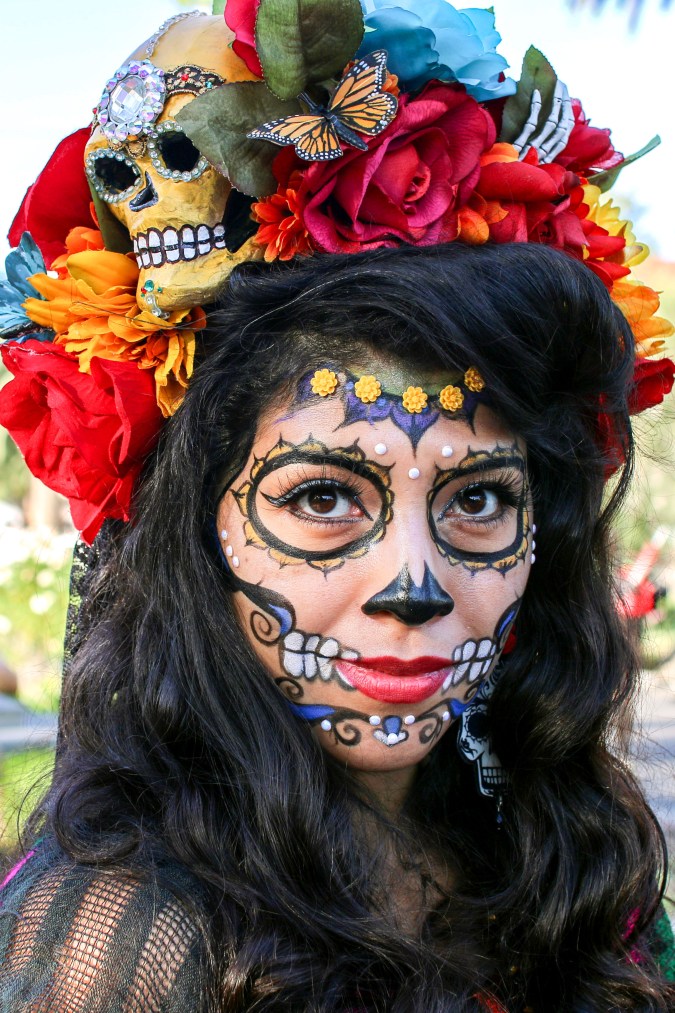
Angelica Jimenez
“I love honoring my family, and a lot of times people think death can be scary. And it can be, but I love honoring my family members and the good times and the bright side of living. I’m honoring my grandma Santos and my grandma Lupe. They were from Laredo, Texas, one miles from the border.
“I think Día de Muertos has become very popular, and it can get lost in translation, because it’s so close to Halloween, and that concerns me. But I also see it’s embraced more than ever in the US, and I think the traditional aspect of it is going to shine through and show people that it’s not something scary. It’s beautiful and it’s bright and it’s colorful and it’s all about the light and love.”

Maria Perez, 31
“For me, Día de Muertos is a way to celebrate the ones that are gone. Yesterday, a close friend of mine passed away, so to be here today is kind of emotional. I’ve been in love with the holiday for more than 10 years. I didn’t really grow up celebrating it with my family in Mexico. It wasn’t until I came here that I started seeing it more, and it makes me appreciate it a lot more because you’re far away from where you’re from.
“As long as people embrace and respect Día de Muertos and do it because they actually feel that way, then I think it’s something that anyone can celebrate.”
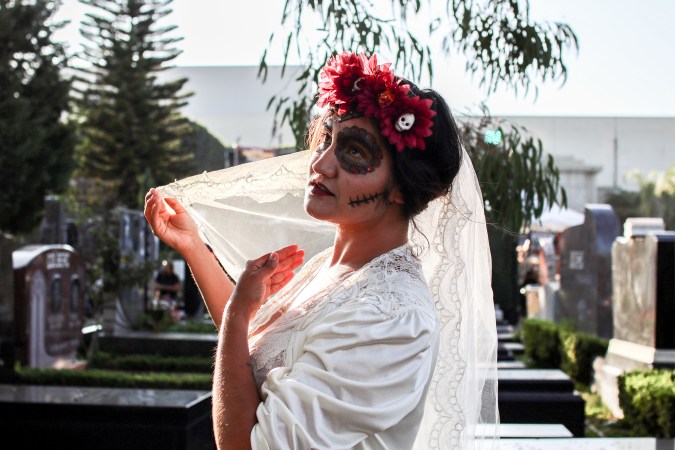
Elizabeth Valdivia, 32
“It’s a big part of my culture and my whole family celebrates it, so I’ve been doing it since I was a little kid. I absolutely love that Hollywood Forever does something so big since we’re not in Oaxaca or Mexico City to celebrate. Today, I’m honoring my uncle, who passed away when I was young, and my grandmother, who passed away three years ago.
“The celebrations in the United States are beautiful because the more time passes, I think, the more people get into the culture and different types of ethnicities start celebrating it, which is beautiful.”
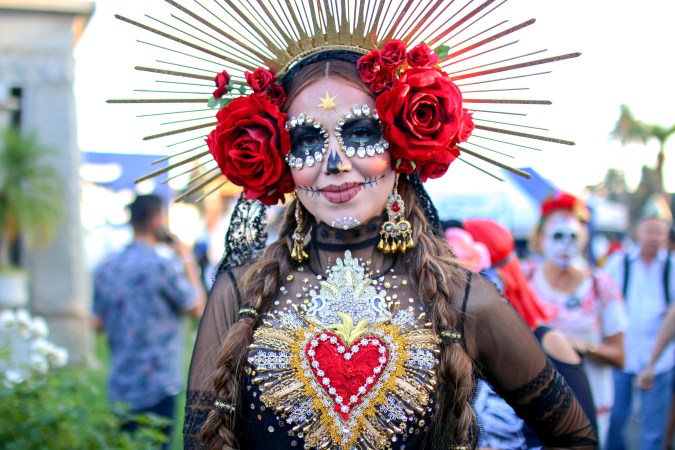
Lily Martinez, 40
“I think Día de Muertos is starting to grow and more cultures are starting to understand what it is for Mexicans to celebrate our loved ones who are no longer with us.”
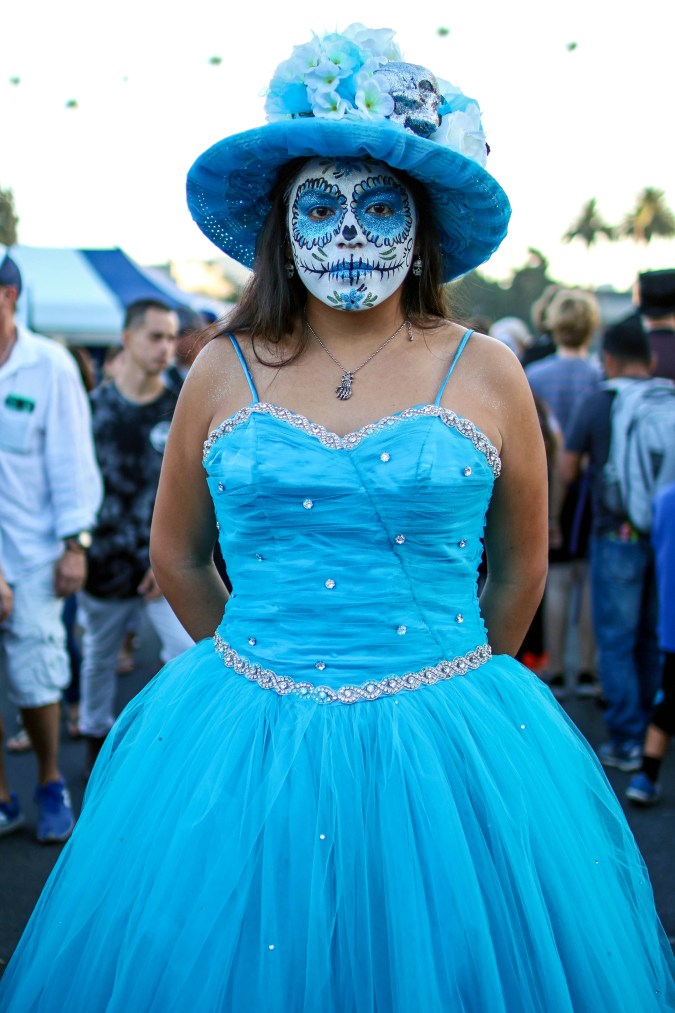
Yamileth Vazquez, 17
“I celebrate because my mom showed it to me when I was little and it’s a little tradition we do. My grandma passed away, too, so we do it for her. I’ve never known anywhere else, so this is the only way I know how to celebrate it.”
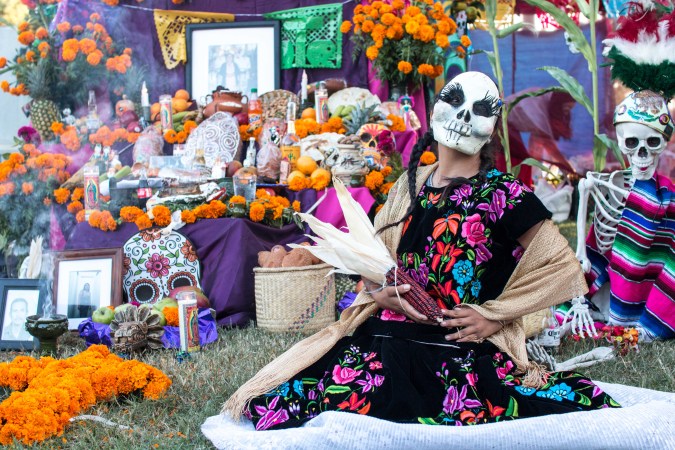
Ingrid Miranda Garcia, 21
“Because it has been passed down for generation, and I want to keep it alive, because my mom is dead and she’s the one being represented. To be able to still feel her and giver her a chance to come back to me at least for one day is something beautiful. Even if people think it’s not real or it’s just spiritual, it makes a whole lot of difference to me. It lets me know what my culture is, the type of food we used to make, everything that we are. It’s beautiful to be able to learn a little more each time I do this, and we’ve done this for many years. We are from Oaxaca, and this altar is traditional from there, like the mole, the chapulines, and the mezcal.
“I believe it’s commercialized and a lot of Mexican culture, even just Indigenous culture alone is commercialized to the max now because everyone is proud to be Indigenous, everyone is proud to be more than just one thing.”
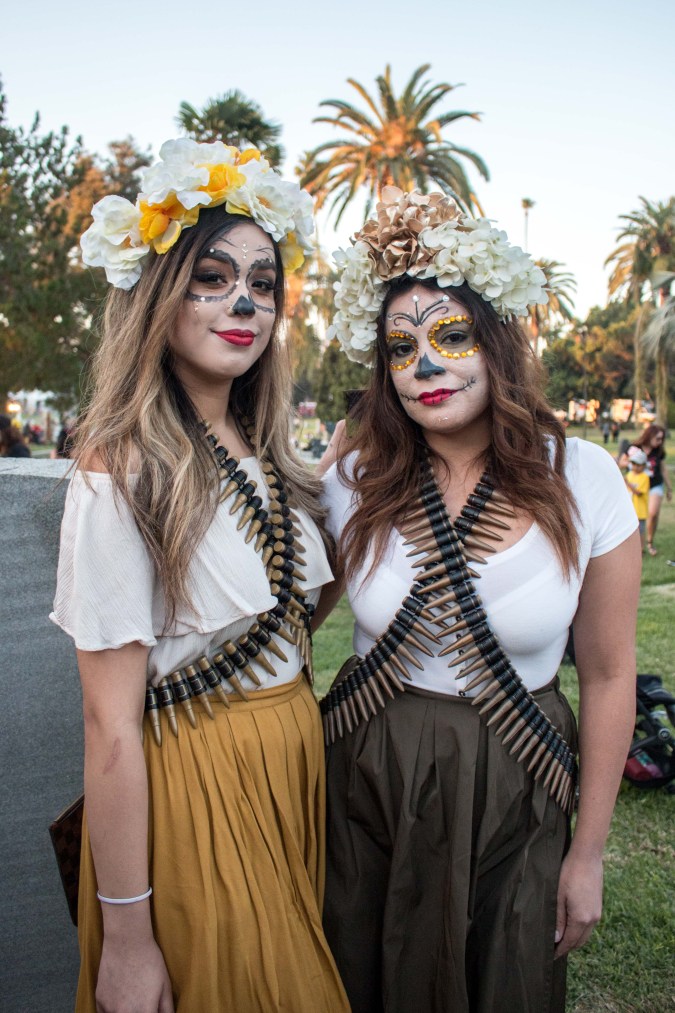
Araceli Ledezma, 33 and Diana Cedillo, 22
Ledezma (left): “I celebrate Día de Muertos to be in touch with my culture. I like the way it’s celebrated here. It’s nice to see it here.”
Cedillo (right): “My culture, being Mexican American it’s nice to be able to celebrate it here. Sometimes I see people just doing the make-up and not knowing the background or honoring the people.”
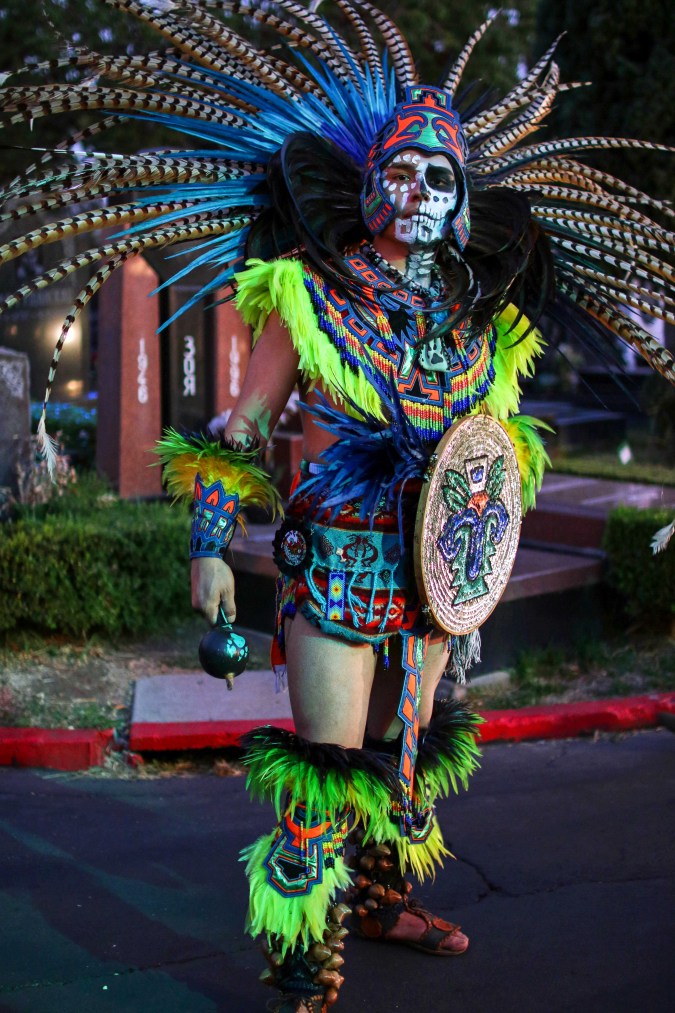
Luis Ramirez, 22
“It’s a tradition I want to to continue for myself and the future kids. In our past, Indigenous people would celebrate it and you can see how powerful our culture is that even though we had many people who conquered us, we still found our way to follow our traditions and remember those who passed away. This whole experience is dedicated to my cousin who passed away last year in October. He was in a car accident. Ever since I feel more connected with life and death.
“I think Día de Muertos is being misinterpreted. A lot of people are using the culture as fashion, but I think the culture will stay strong.”
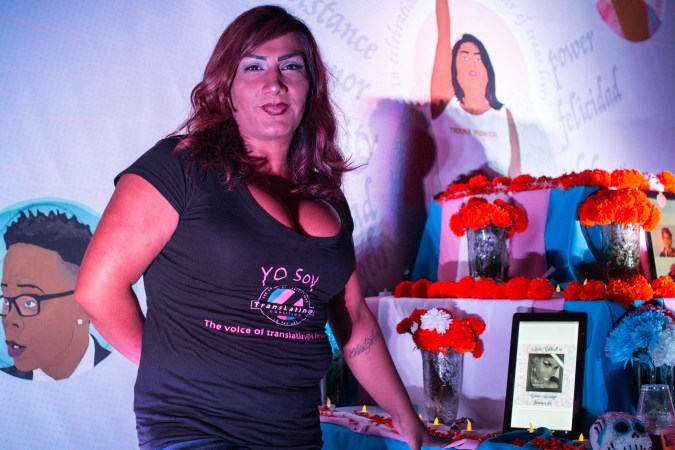
Liza Aseballos, 31
“I’m a volunteer at Translatin@ Coalition. We provide services for trans women of color we help them with housing, with getting a job, with HIV testing, and we try to give them a better life. With this altar, we are honoring the 25 trans women of color that passed away this year in the U.S. because of acts of violence. We are here to show people that there is still ignorance going around and we need to support each other and unite.
“It’s a special day to pay tribute to all the family members and friends who passed away and give them the respect and have a day to give them their favorite food, cigarettes, and drinks like tequila.
“Even though it’s close to Halloween and some people might confuse it, I think a lot of people in the United States have the correct image that Día de Muertos is specifically for paying tribute to people that passed away by painting your face like a skull, lighting candles, and building altars.”
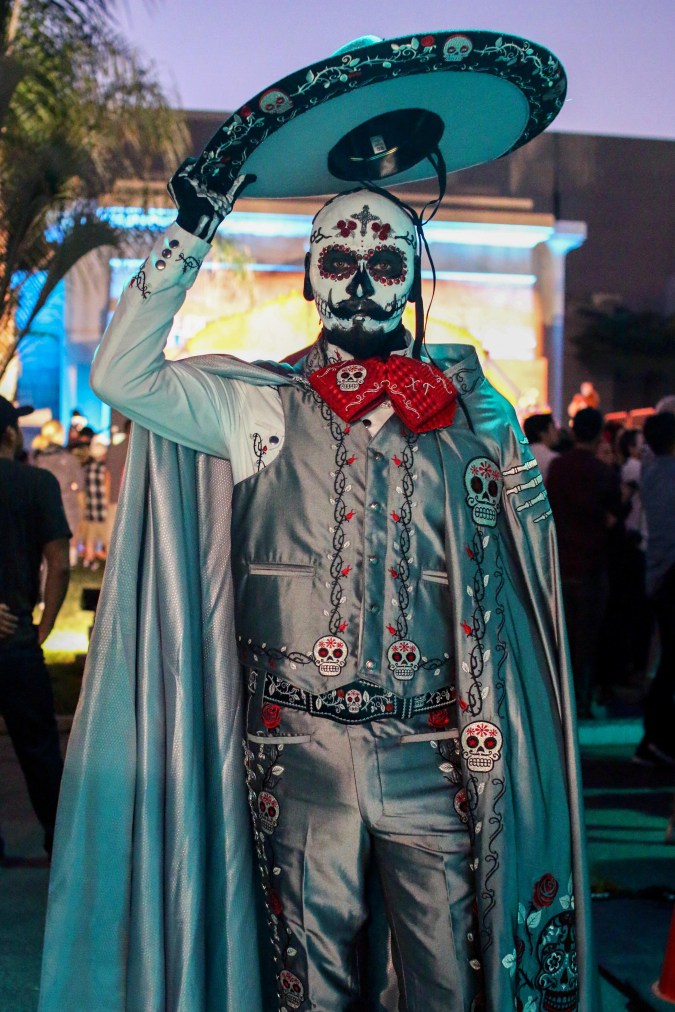
Javier Garcia, 28
“It’s our tradition, it runs in my family and my veins. It’s about celebrating how our relatives don’t leave us and they come back to visit us on this day. I’m honoring my grandma, my grandpa, and my twin brother, who is gone.
“I think the holiday should be more authentic and we should bring all the meaning of the altars and unfortunately we are losing it, but that’s why we are here.”

Jessica Resendiz, 30
“It’s part of my tradition and my culture, and I just want to embrace that with all the childhood memories and I think it’s such a beautiful thing to be able to incorporate it with today’s creativity. It’s celebrating my family that has passed away, keeping their memories alive and spending time with familia.
“I feel like some people think it’s a costume, but it’s not; it’s not a joke. It’s not a Halloween costume. It’s embracing what we were taught when we were little and carrying that with pride today.”




